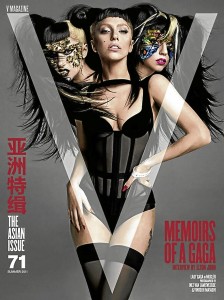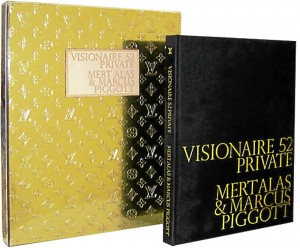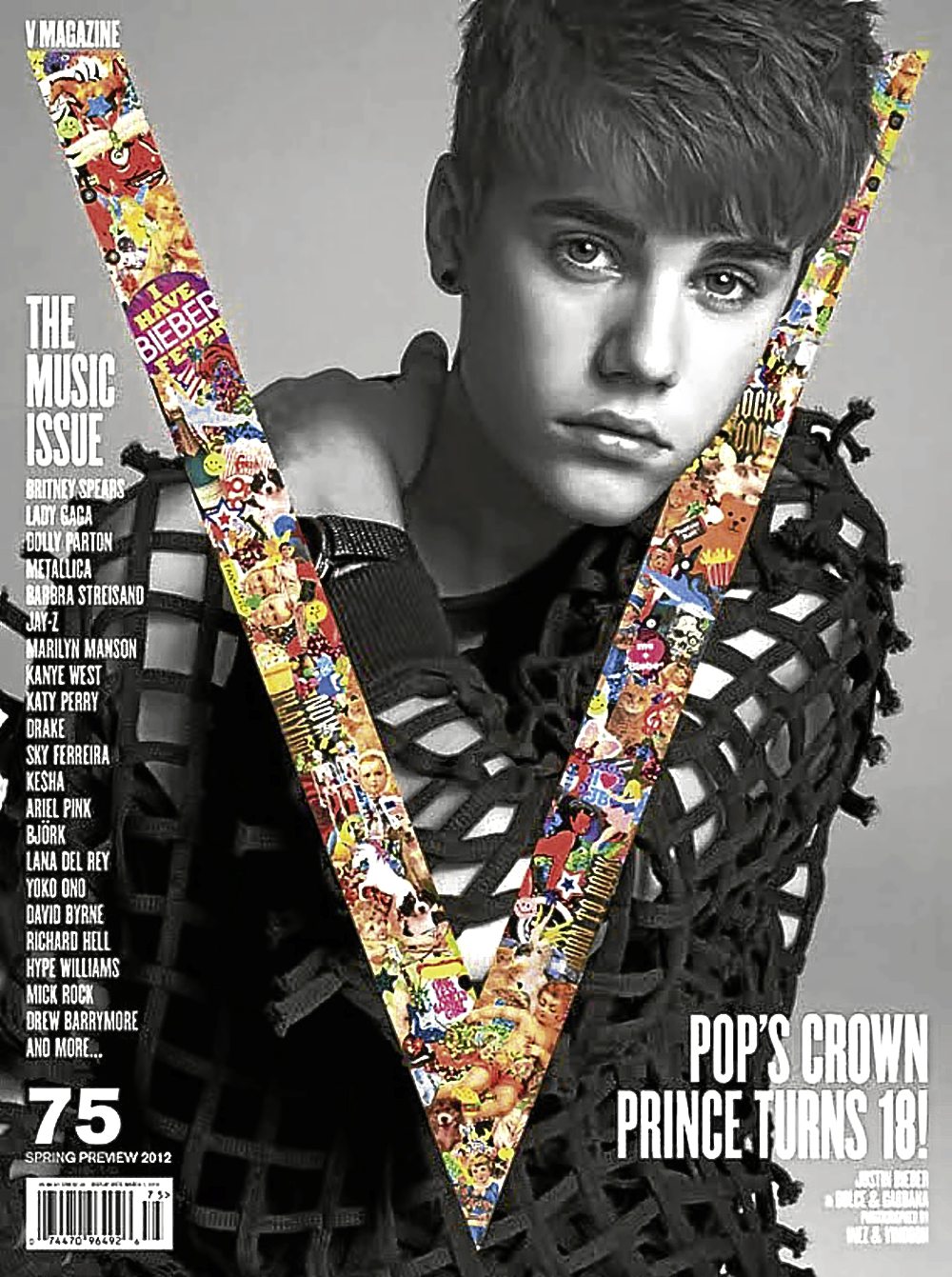
Filipino pride has been a steady source of good news lately, with Filipinos doing well in various fields, from sciences to the arts. One such Filipino achiever is Stephen Gan, New York-based creative director of Harper’s Bazaar and publisher and editor-in-chief of cutting-edge niche publications such as Visionaire and V.
Gan, who left Manila for New York in 1986 to study at Parsons, and who has been away from home for more than a decade, blew into Manila over the weekend almost on a whim.
“I’ve been here for 48 hours,” he said at the lobby of Makati Shangri-La, where he was staying. “But I’m flying back to New York tonight. There hasn’t been much time to do anything but see family and a few old friends.”
Gan, then an aspiring photographer, was spotted by legendary man-on-the-street photographer Bill Cunningham walking the streets of Manhattan looking, in his own words, more “punk” than anything.
The old man liked what he saw in Gan, and after treating him to a cup of coffee and some doughnuts, told him to call Annie Flanders, then editor-in-chief of Details. He did as he was told and was hired a few days later.
“Of course, I wasn’t hired immediately as creative director,” he said. “I rose from the ranks doing all sorts of jobs in the magazine.”
But like any driven Filipino, Gan persevered as he trained his eye waiting for the big break. And that big break came, ironically enough, after he and his colleagues were laid off by Details’ new management.
He didn’t lose heart; the setback emboldened him to venture into uncharted territory. With two of his good friends, Gan set up Visionaire, an expensive, image-driven coffee table book, in 1990 and, later on, V magazine. Harper’s Bazaar would come in almost 10 years later.
“If you want to be a photographer, you have to love photography,” he said. “If you want to be a creative or art director, you have to love graphic design, photography and the art of magazine-making. Definitely, having a passion is the source, and you take it from there. If you’re good at what you do, with hard work, you will eventually stand out.”
What brings you to Manila?
I haven’t been back in 10 years, and this year I woke up on New Year’s Day in Punta del Este, on the border of Uruguay and Argentina, where I had been for three new years in a row because I have a lot of Argentinean friends. It’s like the Southampton of South America, their summer getaway.
I was sick of all my friends asking me what’s Manila like and why don’t I ever go back home. So this year, I’m telling all my friends that they have to shut up now.
Did they come with you?
No. I’m all by myself. I came two nights ago. I’m here 48 hours. I basically came for the weekend. I’m leaving for the US tonight. I saw friends and my family. It’s a crime to go to Manila and not go to one of the islands, but I don’t have time.

Did you know that you would end up working for a magazine after that fateful meeting with photographer Bill Cunningham?
I met Bill on the street when I was 18 and going to Parsons. I wanted to be a photographer. I wasn’t creative director of Details (before Conde Nast took over), but I was junior fashion editor. I started at the very bottom. I was there for a few years until Conde Nast came in, took over and changed everything.
I was fashion market editor. I think I was only there for almost two years. I didn’t know what to do. After Details, I couldn’t imagine myself working for the bigger magazines.
Did you finish your studies at Parsons?
No. I’m a Parsons dropout. Yes, you can print that. I’m proud to be a dropout (laughs). I’m proof that you can drop out and make something of yourself. The great thing about New York is I couldn’t wait to start working. When you’re there and you’re 18, 19, 20 years old, you just want to start working. I hated being in school. Going back to school wasn’t an option. It was either get a job in another magazine or start my own, and I chose to start my own, which was Visionaire.
I started Visionaire with two friends, James Kaliardos and Cecilia Dean, in our apartment. James was from Parsons and Cecilia was from Columbia. That’s how we started, putting the magazine together at home.
Visionaire and V are different. Visionaire is more of an art book, collector’s item type of publication. It’s limited to a select group of subscribers. No ads.
But for V, which is the magazine, we accept ads. Both are my private endeavors.
So, your day job is as creative director of Harper’s Bazaar?
It’s my day job or night job, however you want to see it. In some ways, it does pay the bills. I also do a lot of freelance work as a consultant.
Visionaire is 20 years old, V is 11 years old, and last September I celebrated my 10th anniversary at Harper’s Bazaar. I’m shocked I’ve lasted there this long.
What does a creative director do for a magazine as big as Harper’s Bazaar?
You’re responsible for the look of the magazine. When it comes to the design of the magazine, people either blame or praise you for it, from the cover to the fonts. Choosing the clothes is more a fashion editor’s job, but when I’m working with someone like Karl Lagerfeld, and he asks me that we need a certain kind of black dress to photograph in a certain way, I have to coordinate that with the fashion editor. So I still go to all the shows, and have to update myself with what’s going on in fashion.
What is your working relationship like with Harper’s Bazaar editor-in-chief Glenda Bailey? Is she your immediate boss?
Yes, my name comes in second after hers on the masthead. Surprisingly, we’ve gotten along quite well during the past 10 years.
Why surprisingly? Does she have a reputation, or do you have a reputation?
Surprisingly, because how many working relationships last 10 years, and you still get along very well, considering that we are both very opinionated and very, very different?
How are you different from her? How do you reconcile these differences?
I probably have a bit more eccentric taste than she does. I’ve always loved more alternative fashion, while she tries to speak to a much bigger audience, which is the magazine’s intention as it reaches out to mainstream readers. It has a circulation of 780,000 (copies per issue).
She has to speak to a larger audience, while I’m much more specialized with my taste. I guess we tend to balance each other out.
And in Visionaire and V, you are publisher, right? And this is where you go all out?

Yes. No holds barred. No apologies. I can live out my fantasies through my publication. Looking back at the many things we’ve done, one of my proudest achievements was coming out with the first fashion pictures of (Lady) Gaga.
They’re not losing ventures. We earn money from advertising in V. Visionaire, at $300, pays for itself. It’s a big book. Anything that looks like a magazine with a V on it is V. Visionaire is more a coffee table book and usually hardbound.
One issue of Visionaire came wrapped in a Levi’s jacket, one came in a Louis Vuitton case, one in an Hermes case. Those sold out very quickly. We’ve done three collaborations with Louis Vuitton during the last 20 years. The last one came in a Monogram case.
Visionaire is all visual. We just need to put the artists’ names to credit them. V, on the other hand, is the magazine. It’s great when things last. I’m surprised.
This may sound like a cliché, but where do you get your inspirations?
I think a good thing about fashion (is) there’s always something new. Instead of sitting in a couture show in Paris, I chose to head over to Manila. When I get back tomorrow, the first thing I will do is check out the collections online. From looking at those shows, you will get new ideas for photo shoots.
But Manila isn’t exactly known as a fashion capital. So what do think you would gain from this trip?
No, it’s not. What’s funny is when I landed here in the Philippines, I got an e-mail from Josie Natori (designer). She said she heard that I’m visiting the Philippines after being away for over 10 years, and would I tell her next time before going so we could plan something together.
I don’t know her very well, but we always say hello to each other when we see each other at parties in New York. But at the same time, I really like her. I acknowledge the fact that we’re the only two Filipinos working in the fashion industry in New York.
It’s true, you don’t find anything here. But maybe if I stayed longer and did more research, I will find some talented people here. Creativity springs forth everywhere.
Do you know any designers here after being away for so long?
I’m embarrassed to say that I haven’t done any research, and I really should. This trip was spur-of-the-moment thing. Next time I come back, I want to prepare things better. Actually, I came from Europe to get here.
What part of you is still Filipino?
I left Parsons in ’87. I was at Details ’88 to ’90. I started Visionaire in ’91. I don’t know what part of me is still Filipino at this point. I think I was very lucky to have landed in New York because everyone there is from some place else. If you were born and raised in New York, you would feel weirder than if you were an outsider coming in and living there. Almost everybody from New York I know is from some place else. I’m trying to think among my friends, and all of them are from elsewhere—Paris, Argentina.
Everybody has to prove himself, but everybody is also given equal opportunity, which is great.
Has being Filipino helped you? In what ways?
I think it has helped me in terms of having a certain demeanor. Filipinos are really some of the nicest people in the world, and they’re such a good mix. We’re reflections of the cross-cultural melting pot we come from. We do have an advantage in terms of mindset and facility to express ourselves in English when we go out of the Philippines.
I think there comes a point in everyone that you have to prove yourself as you are, especially in New York. There you’re given so much opportunity and you’re not judged based on your color and where you came from.
New York is the most color-blind place in the world. You go to immigration when you arrive in America, and you see Latinos and Asians working as immigration officers. New York is very welcoming.
So, being a New Yorker, do you experience culture shock when you go to US cities in the Midwest and the South?
A friend of mine has a joke. He calls these places (cities outside New York) the flyover states—states that you fly over to get between New York and L.A., New York and Miami, New York and San Francisco. I’ve never been to Chicago, but I hear it’s nice.
The Christmas before I started going to South America, I went with a friend on a road trip, and drove all the way from Miami to New York. That was a taste of Middle America, but we stayed in a number of nice hotels along the way so we didn’t know any better.
Being part of a mainstream magazine like Harper’s Bazaar, what can you say about the rise of fashion bloggers and the fact that they’re now occupying front-row seats that were once reserved for you guys?
(Long pause) It’s a good question. I think it’s a question every journalist is dealing with at the moment. There are some famous Filipino bloggers, right? I think it’s not a question of replacement. It’s not one group of people coming in to replace another. I think there’s news that will always be of use to one group. It’s about coexisting.
There’s always news that would end up better in a newspaper. There’s news that would end up better in a blog. Because of this development, magazines have started to change also. They don’t want to cover daily events. They know that the magazine has to sit on the shelf for one month, so they have to produce something that won’t get stale easily.
Every form of media is finding its own niche. Everything that happens in the world gets funneled. I visualize it like a pool of information, and there are all these different pipelines and faucets that come out of the pool. Some end up in magazines, some end up in TV, some end up in blogs.
As a magazine, how is Harper’s Bazaar responding to this development? How has it changed you as a professional?
It drives me to make the magazines more beautiful in a way that you want to keep them. You will never want to print out what you read on the blog and keep it. That’s information that is of the moment. It’s disposable. Next day, there’s something completely new. It’s information that you don’t intend to keep.
What do you keep? I meet a lot of young people these days whom I thought would not want to read magazines. Surprisingly, they love great magazines. With the explosion of information came a backlash that has had an opposite effect.
I think younger people that I meet these days, someone, say, like Lady Gaga, who’s 25 and a Twitter queen, loves print. She loves magazines. There’s nothing like holding a beautiful, well-thought-of picture.
Winning isn’t the right word. Maybe, it’s not a competition. Everything, including magazines, has a place.
I guess catalog shots are out?
Yes.
In your work in fashion, who are the three people you admire most?

How about four? It would be Karl Lagerfeld, not just because he’s a good friend, but also because he’s been in this business longer than anyone else. He’s got that incredible stamina. And when we do shoots together, it could be 3 a.m. and everybody is tired and wants to go home. He’s still up and about. Nobody knows where he gets that energy. It’s one of the biggest mysteries of the fashion world.
Secondly, I’d say Lady Gaga. On the opposite side of the spectrum, she’s 25 and she’s become the most famous pop star in the world. I met her when she was 22, and I’ve never seen anyone develop that fast. I feel like she’s done in three years what Madonna did in 20 years. In terms of growth, she’s phenomenal.
She’s normal, but I don’t think what she does in public is an act. Being crazy is just a facet of her personality. You can be normal and crazy at the same time. In all her craziness, she’s very well-grounded.
The third person is photographer Mario Testino, also a friend. He’s one of the best photographers in the world now. I identify with him because he comes from Lima. We always joke around that he comes from Lima and I come from Manila. So we both come from Third World countries. He’s also achieved so much. Being such a talented photographer coming from a Third World country, we know it’s not easy.
Fourth, Carine Roitfeld (former editor-in-chief of French Vogue) because she was editor in chief of French Vogue for 10 years, and was very good at it. She’s really amazing.
Is there a difference between fashionista and fashionable? Do you mind being called a fashionista?
I don’t like the term fashionista. I feel like it means that you’re a fashion victim, a slave to fashion who’d give up everything to feel cool and trendy, and it’s not good to be like that. For me, it doesn’t have a good connotation.
I’m somebody who’s simply interested in covering an industry and a market. My chosen area happens to be fashion. Perhaps, I’m a person who’s fashionable and interested in fashion.
Who do you think are fashionable?
The same four people I mentioned. Then, Glenda Bailey, my business partner Cecilia Dean.
What makes them as such? What makes a woman fashionable?
Somebody once said to me that there’s a difference between being well-dressed and chic. Well-dressed means that you went to the shop and you bought the latest clothes. Being chic is not just about wearing the latest clothes. It’s about having a certain style in your way of life, something that can’t be defined. It goes beyond the latest pair of shoes or it bag.
Being well-dressed is not bad, but some people are just well-dressed. They’re not chic. There’s a difference. Defining chicness is subjective, but if a chic woman walks into this room, we would all look at her and agree that she’s chic.
To me, being chic is more interesting than being pretty. Diana Vreeland, for instance, wasn’t a pretty girl, but she was very chic. Or Coco Chanel, for that matter. She wasn’t pretty, but she was quite chic.











































